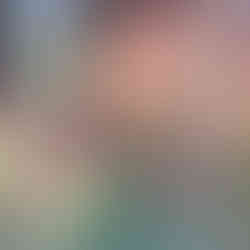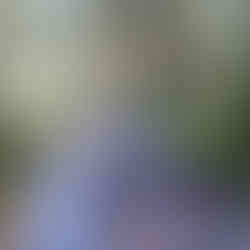Heart-lifting Walk in Ausewell Wood
- valeriehuggins0
- Mar 8
- 4 min read

Another day, another adventure with a new woodland for me to explore. Ausewell Wood is on the side of a Dartmoor valley, near Ashburton, and is a Site of Scientific Interest. Their website tells me that:
"Ausewell is like a lost world, its raw beauty a haven for rare and endangered wildlife. It is 342 acres of wild, rugged wood and heath with dramatic rocky outcrops, boulders and screes, dense woodland and damp temperate rainforest along the famous River Dart."
I learn that the Woodland Trust and the National Trust are working in partnership to protect and restore this woodland. I was looking for somewhere to explore the concept of 'contrast' in photography and this wood seemed ideal. When I arrived, the sense of peace and quiet enveloped me. No traffic noise. Just a gentle breeze and some birdsong. I felt very alone in this space, but also very alive with anticipation at what I might be able to create. As Ruth Allen reminded me "Creativity has it’s wellspring in aliveness and you already have that qualification".
I followed the circular route through the wood. The first contrast was clear - on one side of the path was a plantation of non-native conifers and the other dense, temperate woodland:

As Elliott Erwith comments:
"To me, photography is an art of observation. It’s about finding something interesting in an ordinary place... I’ve found it has little to do with the things you see and everything to do with the way you see them."
If I look at these images with contrast in mind, I see several contrasts: tall/short, dark/light, the hard straight trunks contrasting with the round, fluffy canopies.
This set explores the differences in size of elements within an image: the concepts of thick and thin, large and spindly, wide and narrow. I would have missed these possibilities if I had not been actively looking for them.
I found a place to sit, on the stump of a felled tree, and followed the advice of Paul Sanders: "If you stop, feel and listen the subject will whisper to you." And in that glade, I sensed what he was getting it when he says "we receive what the subject chooses to give us'. I allowed myself those moments of stillness, listening to the subject, what it was suggesting to me. Photographer and environmentalist Yann Arthus-Bertrand says that: "The Earth is art, the photographer is only a witness." So many contrasts before me, with the early Spring sunlight subtly lighting up the scene after the torrential rain of the night before. Slowing down really helped me to feel the sense of the place.
I found that I could create further contrasts through using ICM to emphasise the colours and textures of the different trees. I played with different shutter speeds and movements.
Further along the path I found a dell of ancient woodland, with this wonderful oak at the centre. I marvelled at the entanglements and the colour of the moss popped out:
The rocks around the dell offered more contrasts - what is rock and what is tree?
The spring light dancing on the leaves was a joy after the long grey days of winter. I noted the contrast in colour, shape and tone and took time to play around. I wanted the delicate, round leaves over a background of the straight, hard tree trunks, with the splash of blue as another contrast:
As I reluctantly headed back to the car, I found that the path ahead was full of deep puddles, just catching the light of the sun, in contrast to the dark of the trees:
ICM provided a way of emphasising these contrasting colours.
And then I came across some more contrasts, the impact of human activity on the woodland. Felled and logged within the still-standing:
and the start of the new planting to regenerate and diversify the woodland:
The transition from managed to native will take time, but it is heartening to see that it has begun. This woodland will continue to be a sanctuary for rare and endangered wildlife and people in need of a haven.
Post-processing offered me more possibilties to play with contrasts when I put layers of images together and experimented with different blend modes:
So, what have I learned about my photography by going through this process of developing my photographer's eye? Maybe that:
"A good photograph is one that communicates a fact, touches the heart, and leaves the viewer a changed person for having seen it; it is, in a word, effective." Yann Arthus-Bertrand
Or is there more to it? Wanfei Huang suggests that we need to understand photography as an experience instead of as the visual representation of our observations or inner feelings. They note: “This journey of photographic artmarking and conceptual speculation has taught me to live photography as a set of creative tensions between self, camera and the world instead of merely using photography to express and represent one’s life”. They conclude "When one tries to live photography, a more experimental, playful and creative spirit of engaging oneself with world and camera might emerge."
I am enjoying this phase of my photography as I develop my technical, compositional and creative skills through this mix of focussed tasks and playfulness. Although it is worth saying that the first photo in this blog was actually a happy accident! I had not checked the settings on my camera and they were still set from a previous photoshoot!
If you have enjoyed my musings, have a listen to Paul Sanders talking with Kim Grant about his philosophy on photography.
Some more reading:
Huang, Wanfei (2024),‘Photographic practice as a mode of non-representational self-world engagement’, International Journal of Education Through Art, 20:2, pp. 183–92, https://doi.org/10.1386/eta_00160_7

























































Comments